How to Fix Windows Update Error 0xc80003f3
Several Windows users have been reaching us with questions after being unable to neither Windows or Security Essentials. The error code that comes up is 0xc80003f3. If we were to analyze the error code, it essentially means that the short-term memory (RAM) is full. This might happen in situations where the computer has been repeatedly put to sleep/hibernation instead of shutting it down properly. As it turns out, the issue is not specific to a certain Windows version since it’s confirmed to occur on Windows 10, Windows 8.1 and Windows 7.
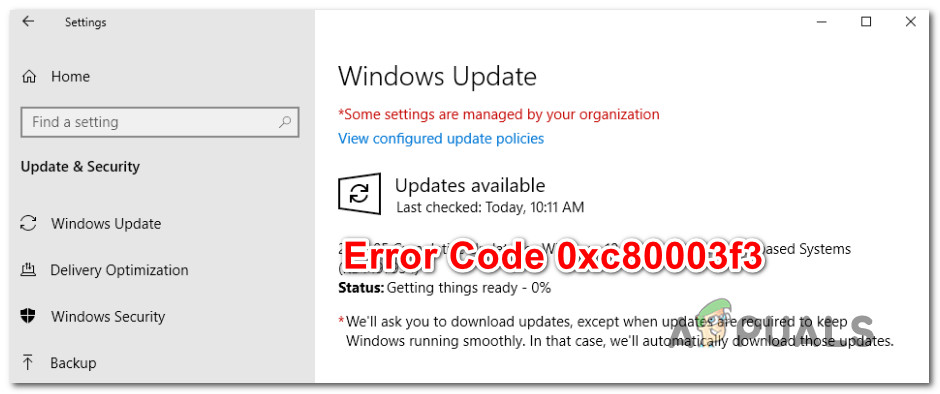
What is causing the 0xc80003f3 error?
We analyzed this particular problem by looking into various user reports and trying out the various fixes that are recommended for the 0xc80003f3 error code. It turns out that several different scenarios are known to trigger this error. Here’s a shortlist with potential culprits:
- Windows Update glitch – You may be encountering this particular error message due to a Windows Update glitch. If this scenario is applicable, you should be able to resolve the issue by using the Windows Update troubleshooter to identify the problem and apply a viable repair strategy automatically.
- Corruption inside the SoftwareDistribution folder – An incomplete update or a partially downloaded file can corrupt an update to the point where it will trigger this particular error code. In this case, you should be able to resolve the issue by deleting the SoftwareDistribution folder, forcing your OS to create a new folder and re-download the files.
- Some critical WU services are disabled – Another possible cause that will lead to this problem is situations where some services essential to the WIndows updating process are disabled. This can either happen due to a user modification or can be caused by a resource management app. In this case, the only fix is to re-enable the services that are prevented from starting.
- Broken WU component – We managed to identify some situations where this issue was occurring on computers where the WU component was effectively broken. If this scenario is applicable, you should be able to circumvent WU entirely by installing the update using the Windows Update Catalog.
- System File corruption – System file corruption can also be responsible for this particular error message. Likely, some corrupted files are not capable of starting the required services and processes. In this case, a repair install should fix the corruption problem without making any damage to your files.
If you’re currently struggling to resolve the same error message, this article will provide you with several different troubleshooting guides. Each of the methods featured below is confirmed to be working by at least one affected user.
We recommend that you follow the potential fixes below in the same order that we arranged them in for the best results. Follow each method and discard the ones that aren’t applicable and you should eventually find a fix that will resolve the problem in your particular scenario.
Let’s begin!
Method 1: Running the Windows Update troubleshooter
Before we jump into more advanced repair strategies, let’s see if your Windows version is not capable of resolving the issue on its own. Several affected users that we’re also encountering the 0xc80003f3 error have reported that they managed to fix the issue entirely by running the Windows Update troubleshooter to fix the issue automatically.
This built-in utility is equipped with a selection of repair strategies that will automatically be applied if a problem that is covered is identified. Here’s a quick guide on running the Windows Update troubleshooter:
- Press Windows key + R to open up a Run dialog box. Next, type “ms-settings:troubleshoot” and hit Enter to open up the Troubleshooting tab of the Settings app.

Opening the Troubleshooting tab of the Settings app via a Run box - Once you’re inside the Troubleshooting tab, move over to the right-hand pane and go over to the Get up and running section. Once you get there, click on Windows Update, then click on Run the troubleshooter.
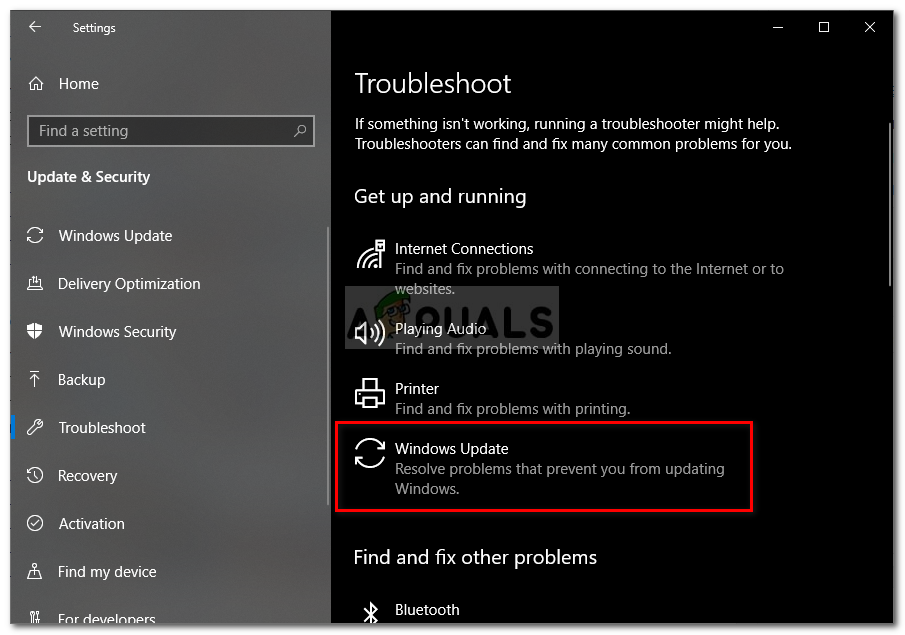
Running Windows Update Troubleshooter - After the utility is started, wait for the initial scan is complete. This will be determined whether any of the repair strategies included in this tool are applicable
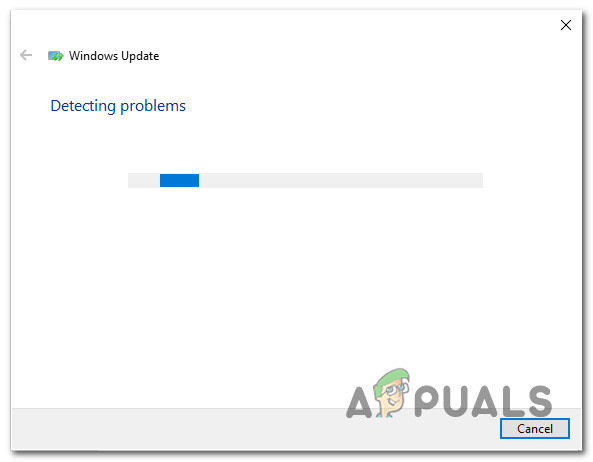
Detecting problem with Windows Update - If a viable fix is identified, then you will be presented with it in the next window. To apply it, click on Apply this fix and then follow the on-screen instructions to enforce the recommended repair strategy.

Apply this fix - Once the recommended fix is successfully applied, restart your computer and see if the issue is no longer occurring starting with the next system boot.
In case the 0xc80003f3 error is still appearing when you try to install a particular Windows update, move down to the next potential fix below.
Method 2: Deleting the contents of the SoftwareDistribution folder
A lot of affected users have reported that they managed to resolve the issue by clearing the Software Distribution folder. This is the main folder that the WU (Windows Update) component is using to store the majority of Windows Update files.
This procedure will end up forcing your Windows OS to re-download all the updates that are pending to be installed. This ends up resolving all those instances where the 0xc80003f3 error is triggered by an incomplete Windows update or by corrupted files inside the SoftwareDistribution folder.
Here’s a quick guide on clearing the SoftwareDistribution folder:
- To delete the SoftwareDistribution folder, you’ll first need to disable a selection of services first (Windows Update Service and Background Intelligence Transfer Service). To do this, press Windows key + R to open up a Run dialog box. Next, type ‘cmd’ and press Ctrl + Shift + Enter to open up an elevated Command Prompt window.

Running Command Prompt as an administrator Note: Deleting the SoftwareDistribution folder will not be possible unless you disable these two services.
- Once you’re inside the elevated Command Prompt, type the following command and hit Enter after each one to stop the two services:
net stop wuauserv net stop bits
- After the two services are stopped, minimize the CMD prompt and open File Explorer. Once you’re inside, navigate to the following location:
C:\Windows\SoftwareDistribution
- Inside the Software Distribution folder, select all contents of that folder, right-click and choose Delete from the context menu.
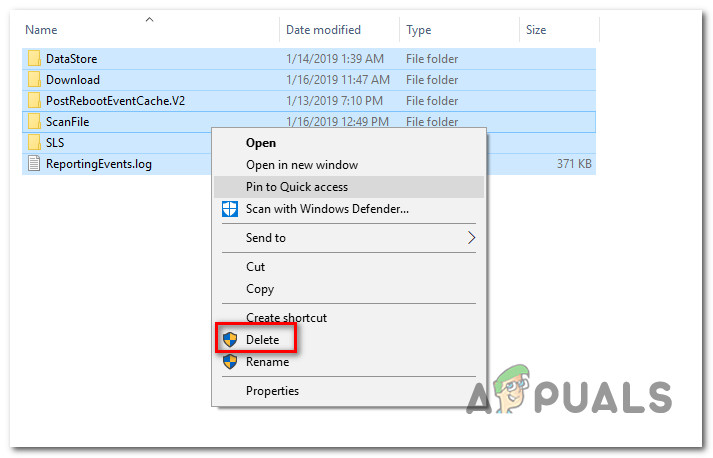
Emptying the contents of the SoftwareDistribution folder - Once the contents of the SoftwareDistribution folder have been cleared, return to the CMD prompt and type the following commands (press Enter after each one) to re-enable the same services that we previously stopped:
net start wuauserv net start bits
- Restart your computer and see if the issue is still occurring once the next startup sequence is complete.
If you’re still prevented from installing some (or all) Windows Updates via the 0xc80003f3 error, move down to the next troubleshooting guide below.
Method 3: Enabling all services used by WU
As it turns out, this particular problem can also occur in instances where some WU (Windows Update) services are preventing from running. This can either be caused by manual user intervention or by some 3rd party applications that will try to reduce resource usage.
UPDATE: We’ve managed to identify several user reports where the issue is occurring on non-genuine Windows installations. Most likely, the WU services are stopped by the activation software.
Several affected users have managed to resolve the issue by ensuring that every WU service used during the updating process is enabled. Here’s a quick guide on doing this:
- Open a Run dialog box by pressing Windows key + R. Next, type “cmd” and press Ctrl + Shift + Enter to open up an elevated Command Prompt. If you’re prompted by the User Account Control (UAC), click Yes at the window to grant administrative privileges.

Running Command Prompt as an administrator - After you arrive in the elevated Command Prompt, type the following commands in whichever order, but make sure to hit the Enter key after each command to set the Startup type of each service to Automatic:
SC config trustedinstaller start=auto SC config bits start=auto SC config cryptsvc start=auto
- After each startup type has been changed accordingly, perform a system reboot once again and repeat the action that was previously causing the error code at the next system startup.
If you’re still encountering the same 0xc80003f3 error when you try to install the updates, move down to the next method below.
Method 4: Installing the Windows update manually
If none of the methods above have allowed you to install the pending updates, chances are you will be able to circumvent the error code altogether by installing the failing update/s manually. There are a few ways to do so, but the most convenient & safe route is to do it via the Microsoft Update catalog website.
We have managed to identify several different reports with affected users claiming that the 0xc80003f3 error didn’t occur when they used the official Microsoft Update Catalog to perform the update.
Here’s a quick guide on how to do this:
- Visit the following page (here) with your browser.
- Once you get to the Microsoft Update Catalog page, use the search function (top-right corner) to search for the update that is producing the error code.
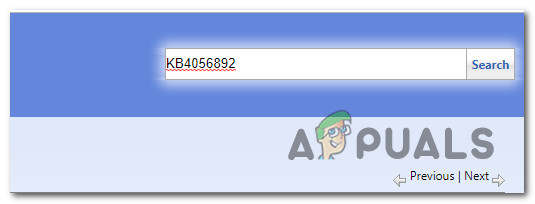
Searching for the update that you want to install manually - When you see the results, look for the appropriate update by looking at the CPU architecture and the Windows version.

Choosing the right Windows Update - Once you manage to find the correct update according to your configuration, hit the Download button and wait for the process to complete.
- Next, double-click on the executable that you’ve just downloaded and followed the instructions inside the installer to complete the installation.
- If the installation completes without issues, you just managed to circumvent the issue entirely.
In case you’re still encountering the 0xc80003f3 error (or a different error) while trying to go for the manual route, move down to the next method below.
Method 5: Performing a repair install
If none of the methods above have allowed you to fix the problem and install the pending update, likely, the 0xc80003f3 error is caused by an underlying corruption problem. In this case, you should be able to fix the problem by resetting every Windows Component (including booting files).
One way to do this is by doing a clean install, but this is a highly destructive procedure that will leave you without any personal files. All your apps, applications and media will be lost.
A better approach would be to perform a repair install. This non-intrusive procedure will only deal with Windows components. This means that all applications, games, music, videos and personal files will be there even after the in-place install is complete. If you decide to use this procedure to fix your Windows Update components, follow the instructions (here).





